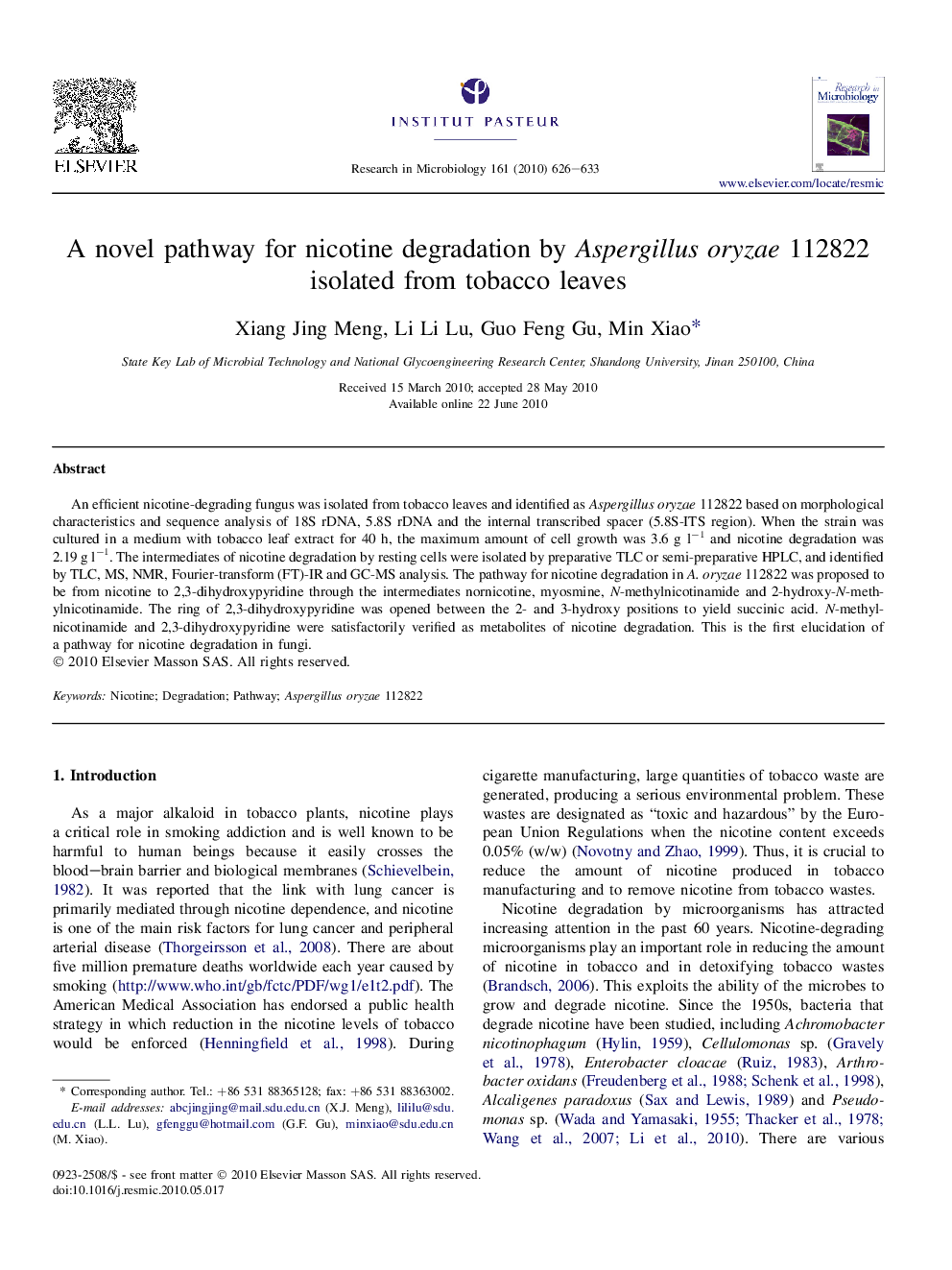| Article ID | Journal | Published Year | Pages | File Type |
|---|---|---|---|---|
| 4359256 | Research in Microbiology | 2010 | 8 Pages |
An efficient nicotine-degrading fungus was isolated from tobacco leaves and identified as Aspergillus oryzae 112822 based on morphological characteristics and sequence analysis of 18S rDNA, 5.8S rDNA and the internal transcribed spacer (5.8S-ITS region). When the strain was cultured in a medium with tobacco leaf extract for 40 h, the maximum amount of cell growth was 3.6 g l−1 and nicotine degradation was 2.19 g l−1. The intermediates of nicotine degradation by resting cells were isolated by preparative TLC or semi-preparative HPLC, and identified by TLC, MS, NMR, Fourier-transform (FT)-IR and GC-MS analysis. The pathway for nicotine degradation in A. oryzae 112822 was proposed to be from nicotine to 2,3-dihydroxypyridine through the intermediates nornicotine, myosmine, N-methylnicotinamide and 2-hydroxy-N-methylnicotinamide. The ring of 2,3-dihydroxypyridine was opened between the 2- and 3-hydroxy positions to yield succinic acid. N-methylnicotinamide and 2,3-dihydroxypyridine were satisfactorily verified as metabolites of nicotine degradation. This is the first elucidation of a pathway for nicotine degradation in fungi.
